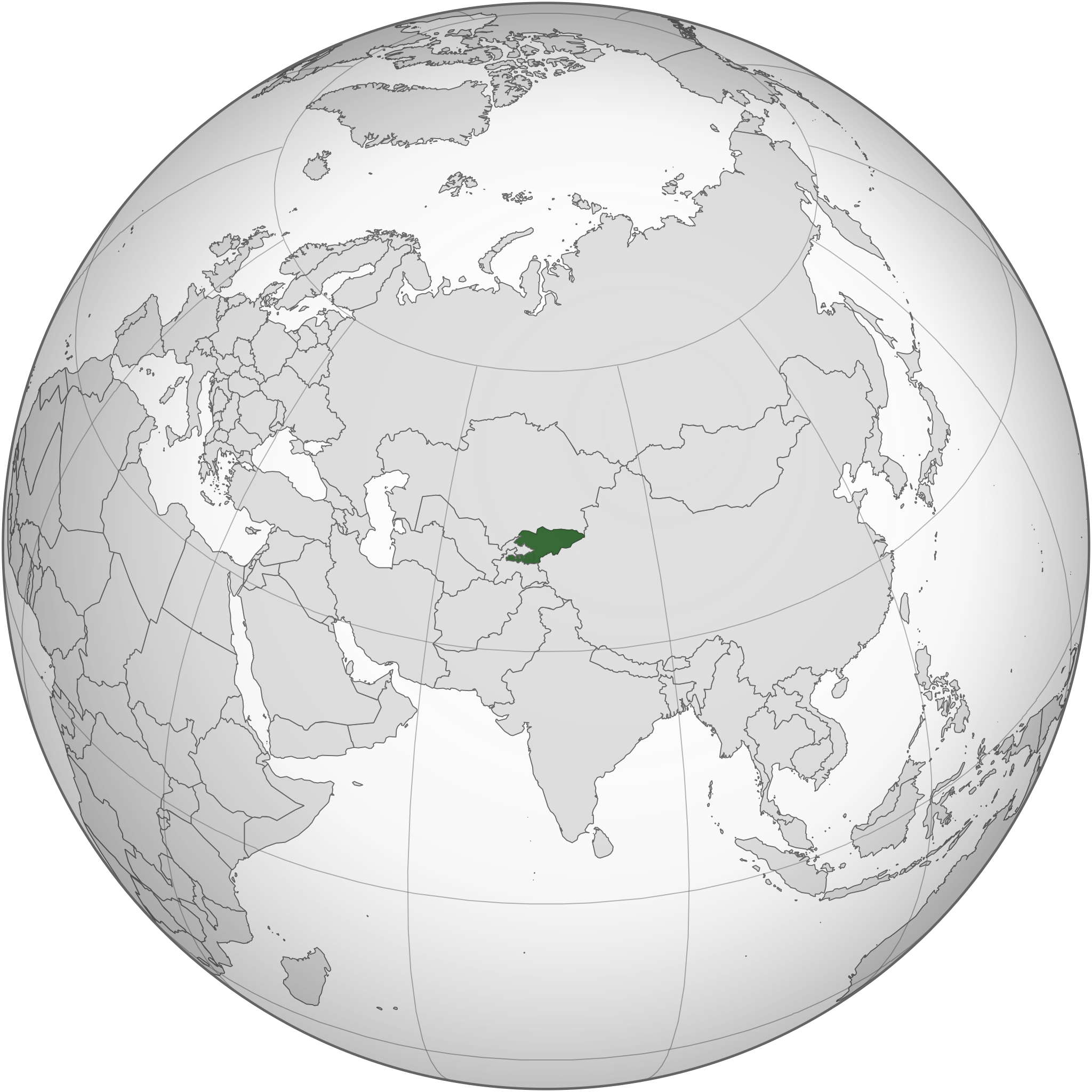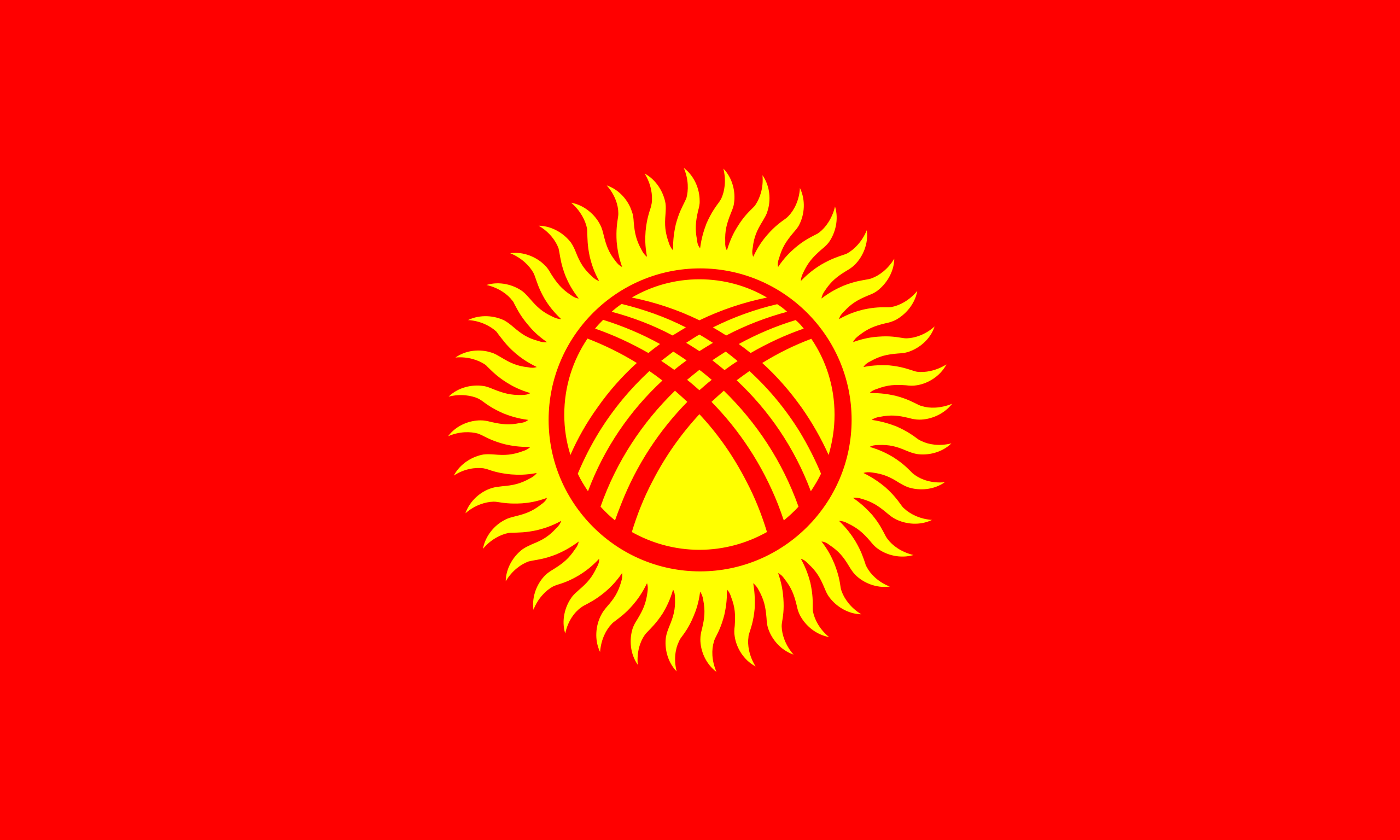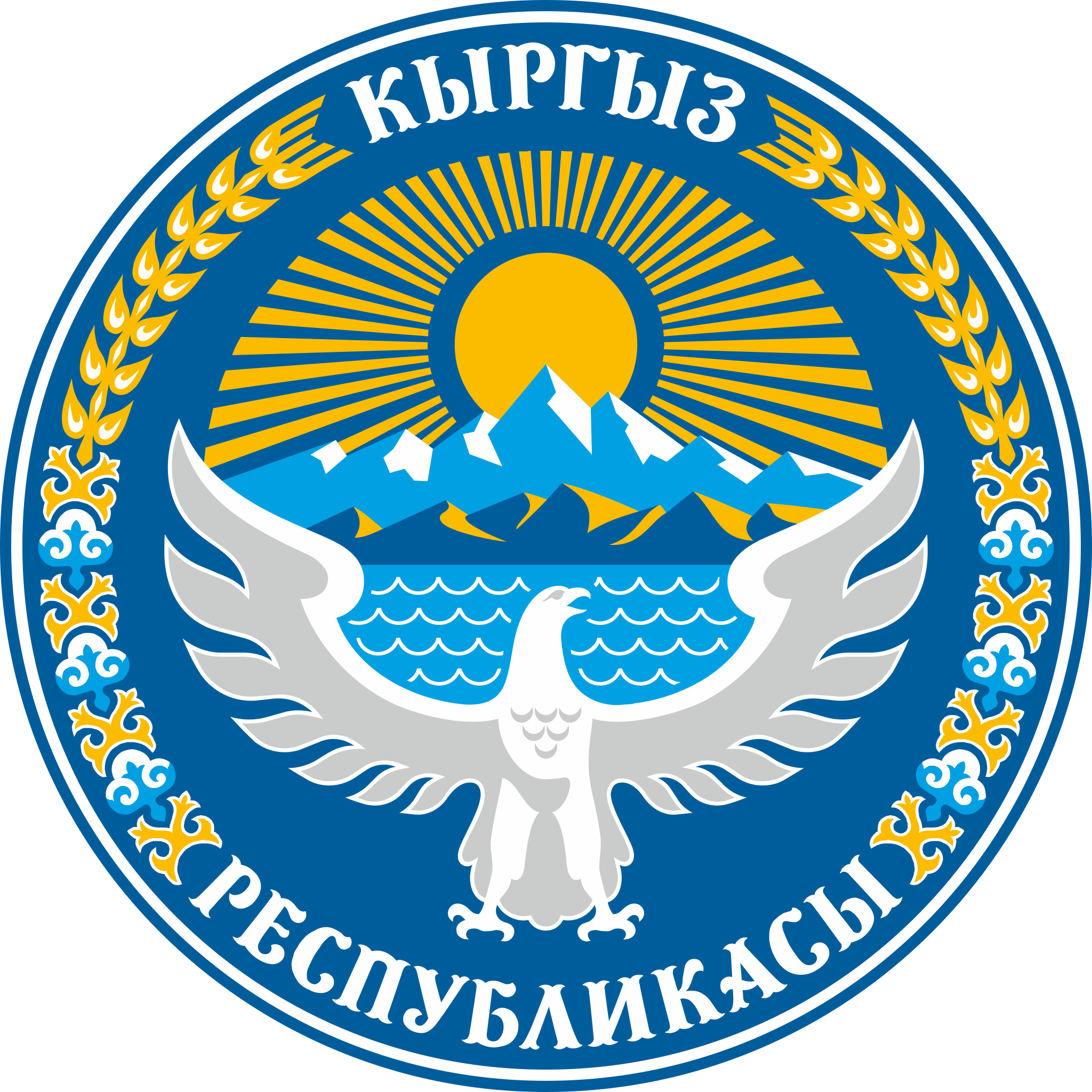More languages
More actions
(Created.) Tag: Visual edit |
No edit summary |
||
| (2 intermediate revisions by 2 users not shown) | |||
| Line 1: | Line 1: | ||
{{Infobox country| | {{Infobox country|name=Kyrgyz Republic|population_estimate_year=2020|established_date2=31 August 1991|established_date1=15 December 1990|established_event3=Secession recognized|established_event2=Secession from [[USSR]]|established_event1=Sovereignty declared|mode_of_production=[[Capitalism]]|map_width=200|leader_name1=[[Sadyr Japarov]]|leader_title1=President|government_type=Presidential republic|population_estimate=6,586,600|native_name=Кыргыз Республикасы<br>Кыргызская Республика|area_km2=199,951|official_languages=Kyrgyz, Russian|largest_city=[[Bishkek]]|capital=[[Bishkek]]|image_map_alt=Kyrgyzstan is a small country south of Kazakhstan, east of Uzbekistan, north of Tajikistan, and west of China.|alt_coat=An eagle standing in front of a sun with wheat and cotton and the native name of Kyrgyzstan.|alt_flag=A red flag with a yellow sun.|image_map=Kyrgyzstan map.png|image_coat=Kyrgyz COA.png|image_flag=Kyrgyz flag.png|established_date3=26 December 1991}} | ||
'''Kyrgyzstan''', officially the '''Kyrgyz Republic''', is a country in [[Central Asia]]. | '''Kyrgyzstan''', officially the '''Kyrgyz Republic''', is a country in [[Central Asia]]. Due to [[Neoliberalism|neoliberal]] economic policies, the average monthly wage is only $132 and a third of the population lives in poverty.<ref name=":0">{{News citation|author=Mazda Majidi|newspaper=[[Liberation School]]|title=Kyrgyzstan: The national question and imperialism|date=2010-06-21|url=https://www.liberationschool.org/10-06-21-kyrgyzstan-national-question-im-html/|archive-url=https://web.archive.org/web/20200922124737/https://www.liberationschool.org/10-06-21-kyrgyzstan-national-question-im-html/|archive-date=2020-09-22|retrieved=2022-06-21}}</ref> In 2013, 61% of the population said the overthrow of the USSR was bad for Kyrgyzstan and only 16% said it benefitted the country.<ref>{{News citation|journalist=Neli Esipova, Julie Ray|date=2013-12-19|title=Former Soviet Countries See More Harm From Breakup|url=https://news.gallup.com/poll/166538/former-soviet-countries-harm-breakup.aspx|newspaper=Gallup|archive-url=https://web.archive.org/web/20220126054739/https://news.gallup.com/poll/166538/former-soviet-countries-harm-breakup.aspx|archive-date=2022-01-26|retrieved=2022-02-07}}</ref> | ||
== History == | |||
=== Early history === | |||
In the late 19th century, most of what is now Kyrgyzstan was transferred from the [[Qing dynasty (1636–1912)|Qing dynasty]] to the [[Russian Empire (1721–1917)|Russian Empire]] and Kyrgyzstan was formally incorporated into Russia in 1876. In 1916, Tsar [[Nicholas]] crushed a rebellion by the Kyrgyz people, killing potentially more than half of the Kyrgyz population.<ref name=":0" /> | |||
=== Soviet era === | |||
Soviet power was established in Kyrgyzstan in 1919 and the [[Kirghiz Soviet Socialist Republic (1936–1991)|Kirghiz SSR]] was established in 1936. Under [[socialism]], housing, railroads, roads, airports, and schools were built and illiteracy was wiped out. The Soviets also provided healthcare when there were almost no trained medical staff before the revolution. | |||
Ethnic conflicts reemerged in 1990 due to [[Mikhael Gorbachev|Gorbachev]]'s national chauvinist policies.<ref name=":0" /> In March 1991, 95.98% of the population voted to remain in the Soviet Union, but it seceded anyway in August of that year.<ref>{{News citation|journalist=|date=2020-10-07|title=Sowjetunion, 17. März 1991 : Weiterbestand der UdSSR als Föderation gleichberechtigter und souveräner Staaten|url=https://www.sudd.ch/event.php?lang=en&id=su011991|newspaper=Database and Search Engine for Direct Democracy|archive-url=|archive-date=|retrieved=2021-12-29}}</ref> | |||
=== Independent Kyrgyzstan === | |||
In 2005, the [[United States of America|United States]] overthrew Kyrgyzstan's government in the [[Tulip Revolution]] and installed [[Kurmanbek Bakiyev]] as president. Bakiyev implemented neoliberal economic policies that decreased the standard of living and increased poverty. During the [[War in Afghanistan|U.S. occupation of Afghanistan]], over 50,000 U.S. soldiers used the [[Manas Air Base]] near Bishkek to transit in and out of [[Islamic Republic of Afghanistan|Afghanistan]].<ref name=":0" /> | |||
==== 2010 revolution ==== | |||
On 7 April 2010, protestors gathered around government buildings in Bishkek. Police fired on the demonstration and killed 75 people, but the protestors were still able to occupy government buildings and oust President Bakiyev from power. Bakiyev refused to step down and paid mercenaries to cause an ethnic conflict, which killed 2,000 people.<ref name=":0" /> | |||
== References == | == References == | ||
[[Category:Countries]] | [[Category:Countries]] | ||
[[Category:Asian countries]] | |||
Latest revision as of 16:32, 17 December 2022
| Kyrgyz Republic Кыргыз Республикасы Кыргызская Республика | |
|---|---|
 | |
| Capital and largest city | Bishkek |
| Official languages | Kyrgyz, Russian |
| Dominant mode of production | Capitalism |
| Government | Presidential republic |
• President | Sadyr Japarov |
| History | |
• Sovereignty declared | 15 December 1990 |
• Secession from USSR | 31 August 1991 |
• Secession recognized | 26 December 1991 |
| Area | |
• Total | 199,951 km² |
| Population | |
• 2020 estimate | 6,586,600 |
Kyrgyzstan, officially the Kyrgyz Republic, is a country in Central Asia. Due to neoliberal economic policies, the average monthly wage is only $132 and a third of the population lives in poverty.[1] In 2013, 61% of the population said the overthrow of the USSR was bad for Kyrgyzstan and only 16% said it benefitted the country.[2]
History[edit | edit source]
Early history[edit | edit source]
In the late 19th century, most of what is now Kyrgyzstan was transferred from the Qing dynasty to the Russian Empire and Kyrgyzstan was formally incorporated into Russia in 1876. In 1916, Tsar Nicholas crushed a rebellion by the Kyrgyz people, killing potentially more than half of the Kyrgyz population.[1]
Soviet era[edit | edit source]
Soviet power was established in Kyrgyzstan in 1919 and the Kirghiz SSR was established in 1936. Under socialism, housing, railroads, roads, airports, and schools were built and illiteracy was wiped out. The Soviets also provided healthcare when there were almost no trained medical staff before the revolution.
Ethnic conflicts reemerged in 1990 due to Gorbachev's national chauvinist policies.[1] In March 1991, 95.98% of the population voted to remain in the Soviet Union, but it seceded anyway in August of that year.[3]
Independent Kyrgyzstan[edit | edit source]
In 2005, the United States overthrew Kyrgyzstan's government in the Tulip Revolution and installed Kurmanbek Bakiyev as president. Bakiyev implemented neoliberal economic policies that decreased the standard of living and increased poverty. During the U.S. occupation of Afghanistan, over 50,000 U.S. soldiers used the Manas Air Base near Bishkek to transit in and out of Afghanistan.[1]
2010 revolution[edit | edit source]
On 7 April 2010, protestors gathered around government buildings in Bishkek. Police fired on the demonstration and killed 75 people, but the protestors were still able to occupy government buildings and oust President Bakiyev from power. Bakiyev refused to step down and paid mercenaries to cause an ethnic conflict, which killed 2,000 people.[1]
References[edit | edit source]
- ↑ 1.0 1.1 1.2 1.3 1.4 Mazda Majidi (2010-06-21). "Kyrgyzstan: The national question and imperialism" Liberation School. Archived from the original on 2020-09-22. Retrieved 2022-06-21.
- ↑ Neli Esipova, Julie Ray (2013-12-19). "Former Soviet Countries See More Harm From Breakup" Gallup. Archived from the original on 2022-01-26. Retrieved 2022-02-07.
- ↑ "Sowjetunion, 17. März 1991 : Weiterbestand der UdSSR als Föderation gleichberechtigter und souveräner Staaten" (2020-10-07). Database and Search Engine for Direct Democracy. Retrieved 2021-12-29.


